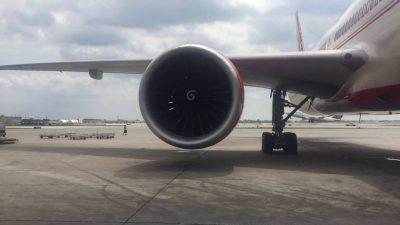A Day in the Life of the World’s Largest Cargo Aircraft: Keeping Global Supply Chains Moving
The global supply chain is a complex and crucial system that relies heavily on efficient transportation methods. Among these, cargo aircraft play a vital role in moving goods quickly and reliably across vast distances. In this fascinating documentary, we get an inside look at one of the most impressive cargo planes in operation today: the Boeing 747-8F.
The Boeing 747-8F: A Marvel of Modern Engineering
At 250 feet long with a wingspan of 224 feet, the Boeing 747-8F is a true giant of the skies[1]. This freighter version of the iconic 747 series can carry payloads of up to 154 tons over distances exceeding 4,000 nautical miles, making it an indispensable asset for global logistics companies.
What sets the 747-8F apart is not just its size, but its innovative design features:
- A forward-facing cargo door that allows the nose of the aircraft to lift up, providing easy access to the cargo hold
- Multiple cargo doors in the fuselage, enabling simultaneous loading of different storage areas
- Advanced technologies that enhance fuel efficiency and overall performance
The Assembly Process: A Testament to Precision Engineering
Boeing’s assembly process for the 747-8F is a marvel of modern manufacturing. The aircraft’s components, including wings, fuselage sections, and engines, are sourced or manufactured at facilities worldwide[1]. The assembly is a highly choreographed process that requires precision engineering to ensure proper fit and alignment of all parts[1].
Freighter Conversion: Extending the Life of Aircraft
Boeing also contributes to the supply chain through its freighter conversion process. This involves modifying old passenger planes for cargo use, extending their useful life by up to 20 years. The process includes removing passenger elements, cutting holes for cargo doors, and reinforcing the floor structure.
Beyond Commercial Use: Supporting Space Exploration
Large cargo aircraft also play a crucial role in space exploration. NASA has a long history of using specialized aircraft to transport rocket parts and other oversized cargo[1]. For instance, in 2018, NASA used a military aircraft to transport the James Webb Space Telescope, showcasing the versatility and importance of these massive flying machines.
In conclusion, the world’s largest cargo aircraft are not just impressive feats of engineering; they are essential components of our global supply chain and scientific endeavors. As we continue to rely on fast and efficient transportation of goods and equipment worldwide, these giants of the sky will undoubtedly play an increasingly important role in shaping our interconnected world.




